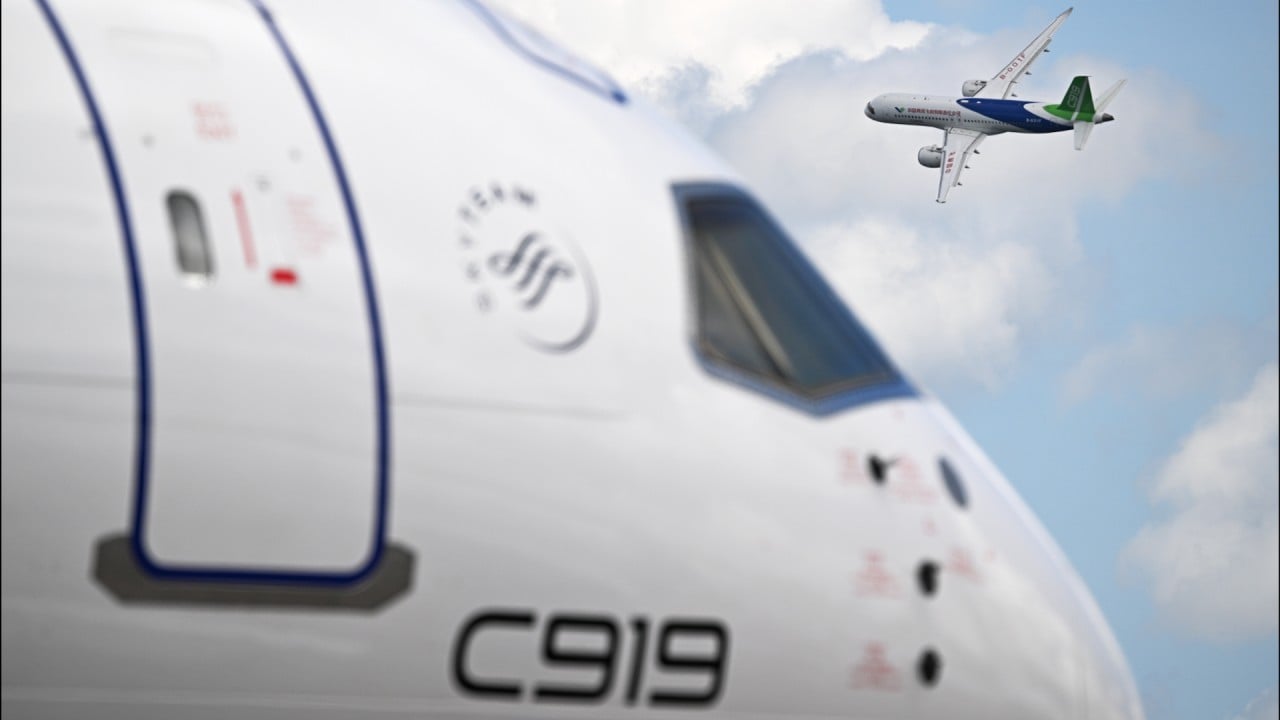China’s C919 waiting in the wings as Shanghai announces plane replacement plan

China’s largest aviation hub has announced plans to expedite the renewal of its airlines’ fleets to spur economic recovery, encouraging carriers to purchase 200 new aircraft – including home-grown models – by 2027.
Shanghai authorities unveiled a host of measures for equipment swaps in the transport sector on Thursday, including a call for airlines based in the city to procure new, more environmentally friendly aircraft and retire less fuel-efficient ones.
Analysts said while the plan could be a boon for the local aviation industry – as well as indigenous aircraft – carriers, not the government, must make their final procurement decisions.
Shanghai, which saw more passengers and cargo move through its airports than any other Chinese city in 2023 and the first half of 2024, is well positioned to motivate its airlines to refresh their fleets.
The average age of China Eastern’s Airbus A320 and Boeing 737 models – which the C919 has been positioned to compete with – is more than 10 years, according to the airline’s data.
A lecturer with Shanghai Civil Aviation Polytechnic College said airlines in the city are already renewing their fleets, and the government’s recommendation can dovetail with the process.
“The total value of the 200 new aircraft could be from 120 billion to 150 billion yuan (US$16.7 billion to US$20.9 billion), and new aircraft orders can spawn business along the long, sophisticated industrial chain,” said the lecturer, who requested not to be named as he was not authorised to speak to the media.
But government edicts, he said, should not affect or dictate airlines’ business decisions.
“In a highly competitive industry like aviation, carriers must weigh a plethora of factors before they commit to new purchases and decide when to place orders and take deliveries,” he added. “Different companies will have different plans.”
Mayur Patel, head of Asia for OAG Aviation, a Singapore-based air travel data provider, said when an airline makes fleet decisions, several variables come into play.
“Demand growth, fleet age and type, route and network strategy … These factors are interrelated, and airlines must carefully balance them to make strategic fleet decisions,” said Patel, adding that aviation specialists are the people best suited for the job.
The city has said its equipment renewal plan will also incentivise the reduction of carbon emissions, improvements to airport infrastructure and adoption of sustainable sources of aviation fuel, though no funding details have been given.
Source link




